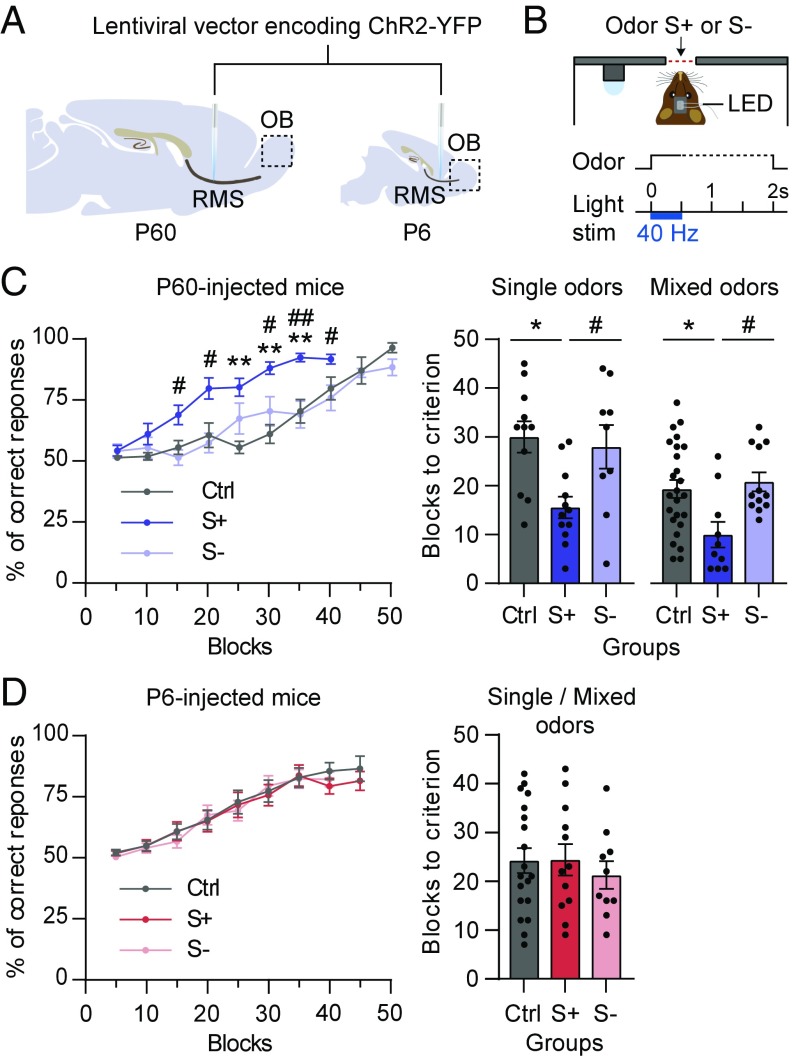Fig. 2.
Activation of adult-born GCs facilitates learning during S+ presentation. (A) Lentiviral vectors encoding ChR2-YFP were injected in the RMS during adulthood (P60) (Left) or at the neonatal stage (P6) (Right). (B) The LED implanted above the OB allowed in vivo 40-Hz photoactivation during odor delivery in the discrimination learning task. (C, Left) Adult-born GC photoactivation during S+ or S− presentation (group: F2,24 = 9.6, P = 0.0009, repeated-measures two-way ANOVA followed by Bonferroni post hoc test; **P < 0.01 for S+ vs. control (Ctrl), #P < 0.05, ##P < 0.01 for S+ vs. S−, n = 9–12; odor pair: P2). Ctrl mice stimulated during S+ vs. S− odor presentations showed identical performances and were pooled together (group: F1,9 = 1.06, P = 0.32, repeated-measures two-way ANOVA, n = 5–7). (Right) The number of blocks needed to reach the criterion for P60-injected mice for tasks with single odors (odor pair: P2) or mixed odors (odor pair: P1) (P = 0.007, n = 9–12 and P = 0.009, n = 10–25, respectively, Kruskal–Wallis test followed by post hoc Dunn’s test, *P < 0.05, #P < 0.05). (D, Left) Neonatal-born GC photoactivation during S+ or S− presentation (group: F2,39 = 0.068, P = 0.93, repeated-measures two-way ANOVA, n = 9–19; odor pairs: P1 and P2). Control mice stimulated during S+ vs. S− odor presentations showed identical performances and were pooled together (group: F1,17 = 0.06, P = 0.81, repeated-measures two-way ANOVA, n = 8–11). (Right) The number of blocks needed to reach the criterion for P6-injected mice (P = 0.80, Kruskal–Wallis test, n = 9–19; odor pairs: P1 and P2). Data are shown as mean ± SEM and individual data points.

